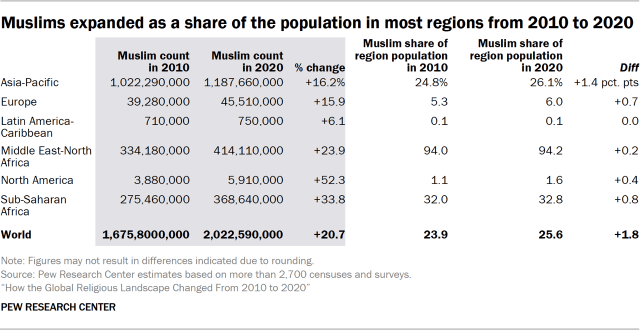Muslims lead world population growth in the latest release of Pew Research statistics for the period 2010-2020. It was this boast by the Dunedin mosque that sparked Brenton Tarrant to senselessly attack Muslims here in New Zealand in 2019.
It was because Tarrant’s actions were not only unnecessary to combat Muslims leading the world population growth, that many around the world still think Tarrant was part of a larger global plan to destabilise the west. Tarrants actions were unnecessary because education defeats Islamic ideology. Islam isn’t a religion in the traditional Western sense of the word. It’s not an army, or a nation, or a war to be fought. It’s an ideology that has been slowly constructed and manipulated over the last 1300 odd years by those wishing to gain power and control over those around them.
Because Islam is only an ideology, you don’t need weapons to combat it. All one is required to do is educate it’s adherents to the origins of their ideology so they too can see how texts and events have been manipulated to bring them under control.
Although Muslims lead world population growth, their increase appears to be mainly through higher birth rates, especially when they migrate to Western countries with generous welfare.
This from Pew Research:
Muslims are the world’s second-largest religious group and the fastest-growing major religion. They make up the vast majority of the population in the Middle East-North Africa region. In all other regions, Muslims are a religious minority, including in the Asia-Pacific region, which is home to the greatest number of Muslims.
Global change
The number of Muslims around the world grew 21% between 2010 and 2020, from 1.7 billion to 2.0 billion. Muslims grew twice as fast as the rest of the world’s population, which expanded by 10% during the same decade. As a result, Muslims grew as a share of the global population, from 24% to 26%.

The number (or count) of Muslims grew in all geographic regions between 2010 and 2020, but the extent of the increase varied widely.
The rate of Muslim growth was the highest in North America, where Muslims numbered 5.9 million in 2020 (up 52%), followed by sub-Saharan Africa, where Muslims grew to 369 million (up 34%).
In every region, Muslims grew at a faster rate than the non-Muslim population, with one exception. In the Latin America-Caribbean region, which has the smallest Muslim population, the number of Muslims increased by 6%, while the region’s non-Muslim population grew by 10%.
As a result, the percentage of Muslims rose in all regions outside of Latin America and the Caribbean. The Muslim share of the population increased the most in the Asia-Pacific region, where Muslims rose to 26% of the population in 2020 (up 1.4 percentage points). Meanwhile, Muslims grew to make up 33% of all residents in sub-Saharan Africa (up 0.8 points) and 6% of Europe’s population (up 0.7 points).
Since 2010, the world’s Muslim population has become slightly more concentrated in sub-Saharan Africa, which is now home to 18% of the world’s Muslims (up 2 points).
Muslims have become slightly less concentrated in the Asia- Pacific region, which is home to 59% of all Muslims as of 2020 (down 2 points).
A third of Muslims live in Indonesia, Pakistan or India. Indonesia’s count is slightly ahead of the others: Roughly 240 million Muslims – around 12% of the world’s Muslims – are in Indonesia, as of 2020. The 10 countries with the largest number of Muslims are home to a combined 1.3 billion Muslims, or 65% of the world’s total Muslim population.
In nine of these countries, Islam is the majority religion. India is an exception. The 213 million Muslims living in India as of 2020 make up only 15% of the country’s overall population.
Where did the Muslim share of the population change the most?
In five countries, the estimated share of the population identifying as Muslim changed substantially (by at least 5 percentage points). In Kazakhstan, Benin and Lebanon, the Muslim share of the population increased, while in Tanzania and Oman, the share of Muslims decreased.

